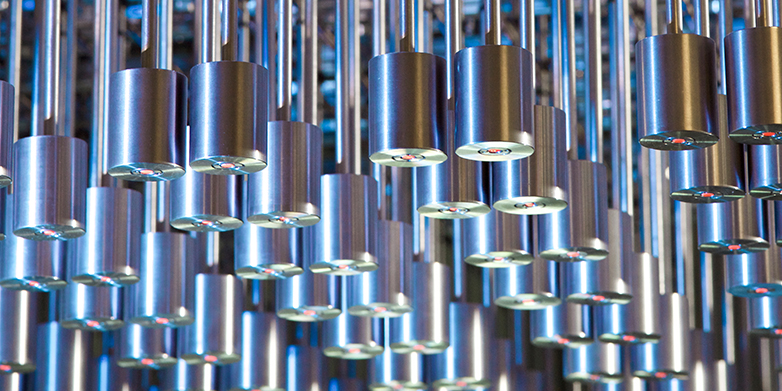Phononic topological insulators

The quantum Hall effect, 2D and 3D topological insulators: These system are all low temperature quantum states. But are topological bands an intrinsic quantum effect? With our 270 pendula, we answered the question with an affirmative no.
Topological insulators, where the bulk does not admit any transport but the edges are characterized by stable edge modes, took the condensed matter community by storm. However, almost all activities were centered around fermionic electrons, where one could have come to the conclusion that the topology of Bloch bands is a quantum effect. However, we know that single particle quantum mechanics is essentially (matter-) wave physics. It was therefore not a big stretch to conjecture that topological band theory might apply equally well to classical systems.
In 2015, we built a system of 270 coupled pendula. Each is half a meter long and half a kilogram heavy. This is undoubtably a classical system described by Newton's equation of motion. We designed the mathematical model underlying the dynamics to follow the same structure as the one describing their quantum cousins. By doing so, we managed to import the fascinating phenomenology of topological bands into the world of classical mechanical systems.
Mechanical quantum spin Hall effect
In our publication (external page Science 349, 47 (2015)) we could show how the quantum spin Hall effect in the form of two copies of the Hofstadter lattice model with flux ±1/3 can be implemented in a mechanical system. Using an array of classical pendula we could measure all key properties of the topological band structure. Moreover, we could show how by intentionally breaking the protecting symmetry we can build in a "topological switch" (external page New Journal of physics 19, 015013 (2017)).
The following video provides an illustration of our coupling mechanisms:
When injected at the correct frequency, a wave-packet travels uni-directionally along the edge:
We can also excite a wave packet:
Finally, that's you looking with you bare eye at an edge mode passing by a corner:
References
Süsstrunk R, Huber SD. Observation of phononic helical edge states in a mechanical topological insulator, external page Science 349, 6243 (2015)
Süsstrunk R, Zimmermann P, Huber SD. Switchable topological phonon channels, external page New Journal of Physics 19, 015013 (2017)
Huber SD. Topological Mechanics, external page Nature Physics 12, 621 (2016)
Süsstrunk R, Huber SD. Classification of topological phonons in linear mechanical metamaterials, external page PNAS 113, E4767 (2016)